Resources
Here you can search external resources from STOP Spillover's experts (tagged in blue) and resources developed by the STOP Spillover project (tagged in red).
We found 8 resources.
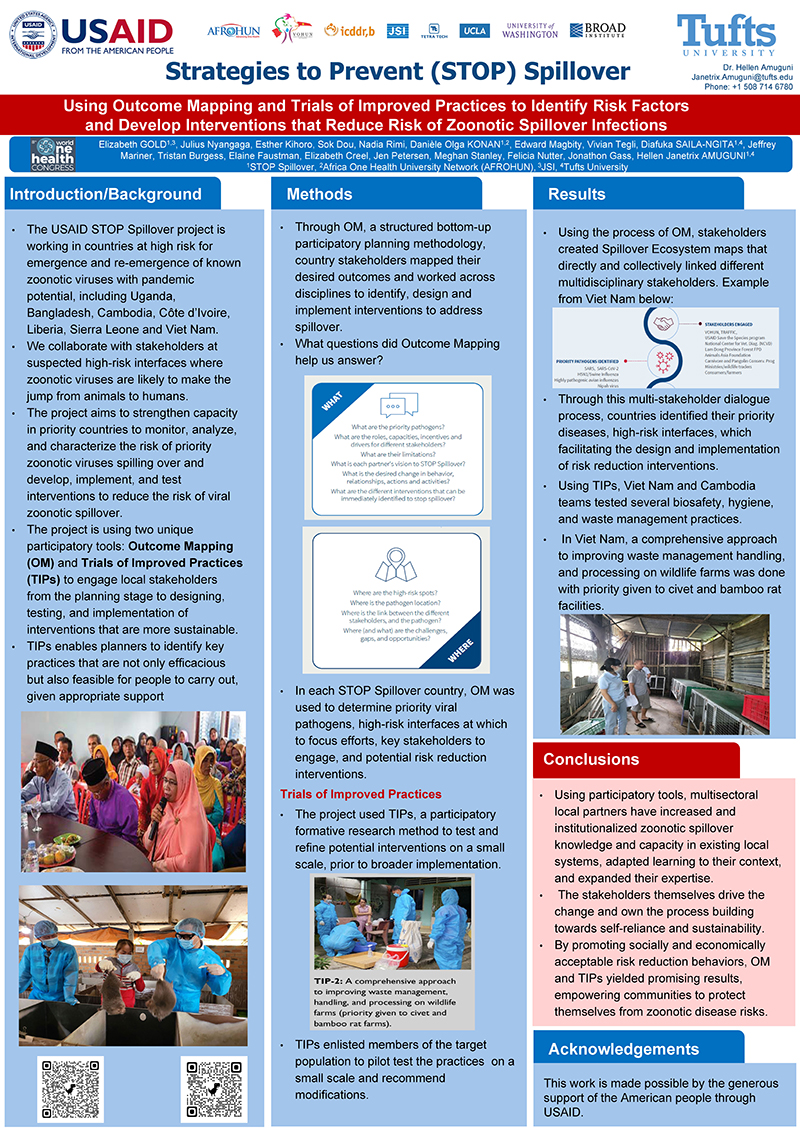
This STOP Spillover poster, presented at the 8th World One Health Congress 2024, describes the project's use of two unique participatory tools—Outcome Mapping and Trials of Improved Practices—to engage local stakeholders from the planning stage to designing, testing, and implementing interventions that are more sustainable.
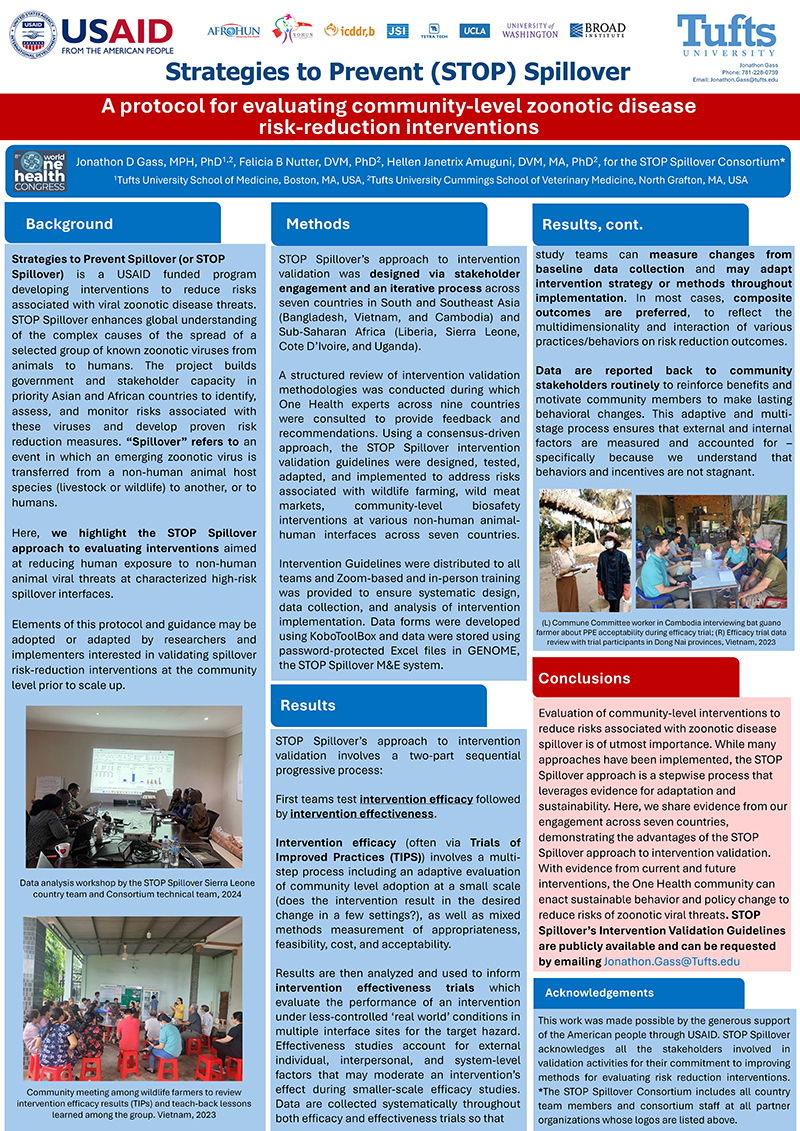
A Protocol for Evaluating Community-Level Zoonotic Disease Risk Reduction Interventions
This STOP Spillover poster, presented at the 8th World One Health Congress 2024, describes the project's approach to intervention validation, which was designed via stakeholder engagement and an iterative process across seven countries in South and Southeast Asia and Sub-Saharan Africa to address risks associated with wildlife farming, wild meat markets, and community-level biosafety interventions at various non-human animal-human interfaces.
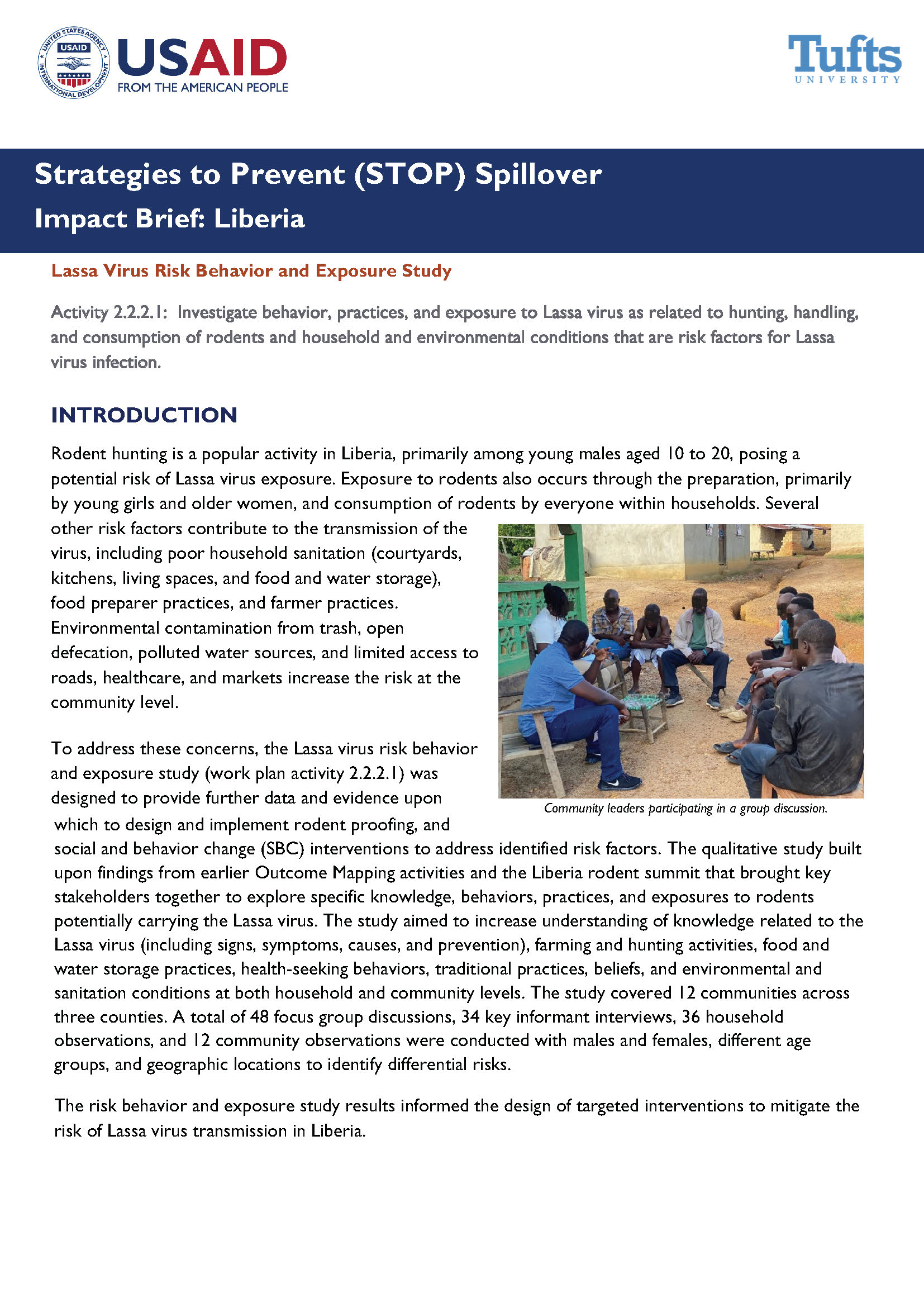
Impact Brief: Lassa Virus Risk Behavior and Exposure Study
This brief summarizes a Lassa virus risk behavior and exposure study conducted in 12 communities to increase understanding of knowledge related to Lassa virus, farming and hunting activities, food and water storage practices, health-seeking behaviors, traditional practices, beliefs, and environmental and sanitation conditions at the household and community level. The study included focus group discussions, key informant interviews, household observations, and community observations.
This brief describes rodent monitoring that occurred in homes in six communities in Liberia. The data will improve understanding of the presence of rats and their access to domestic and public water and food storage in selected communities.
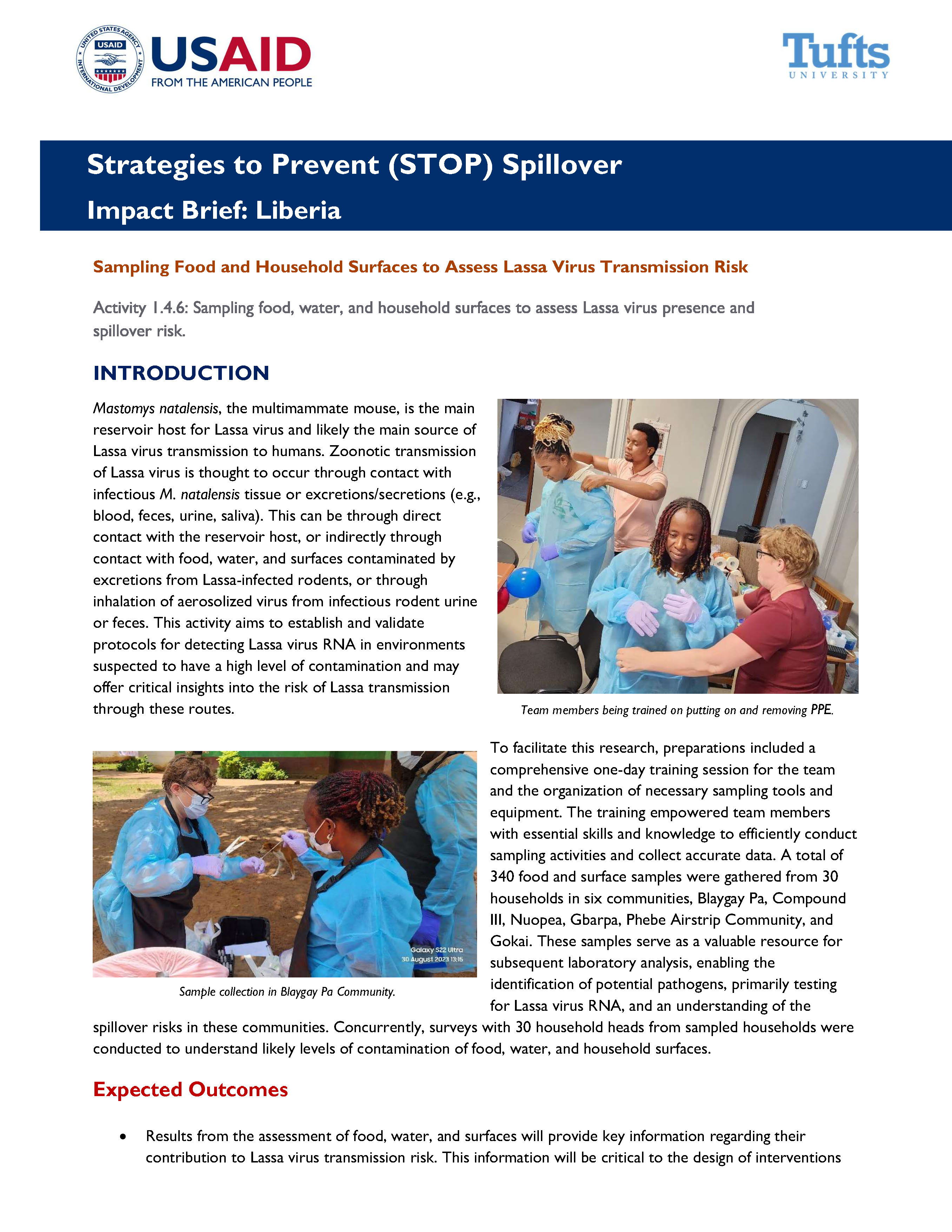
Impact Brief: Sampling Food and Household Surfaces to Assess Lassa Virus Transmission Risk
This brief describes an activity to gather food and surface samples from 30 households in six communities in Liberia. The samples underwent laboratory analysis, enabling the identification of potential pathogens (including testing for Lassa virus RNA). This information is critical to the design of interventions to reduce the risk of spillover from rodents to humans.
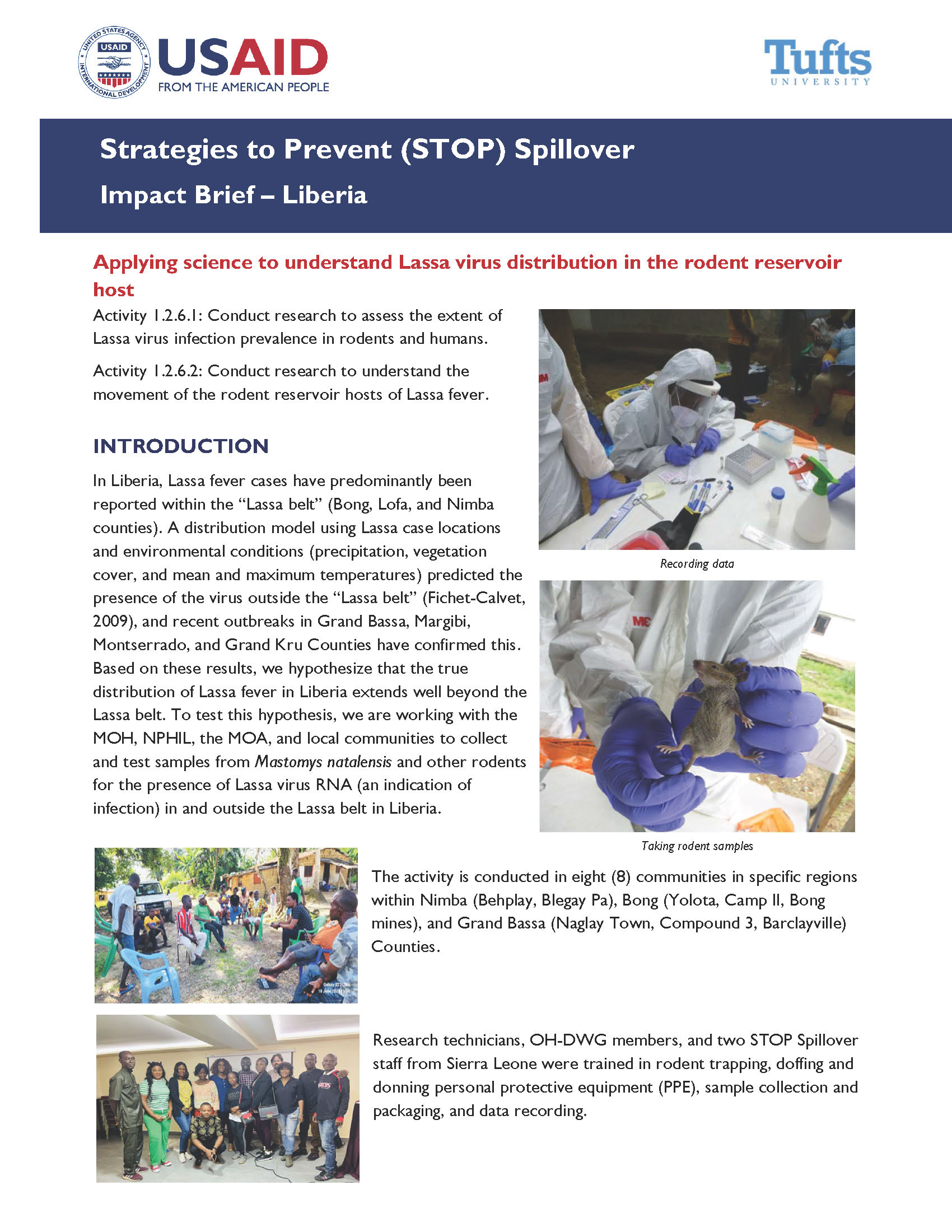
Impact Brief: Applying Science to Understand Lassa Virus Distribution in the Rodent Reservoir Host
This brief describes training held in Liberia to prepare research technicians, One Health-Design Research and Mentorship (OH-DReaM) working group members, and STOP Spillover Liberia team members to collect and test samples from rodents for the presence of Lassa virus RNA—an indication of infection. The research was conducted to understand whether the distribution of Lassa fever in Liberia extends beyond the previously identified "Lassa belt.
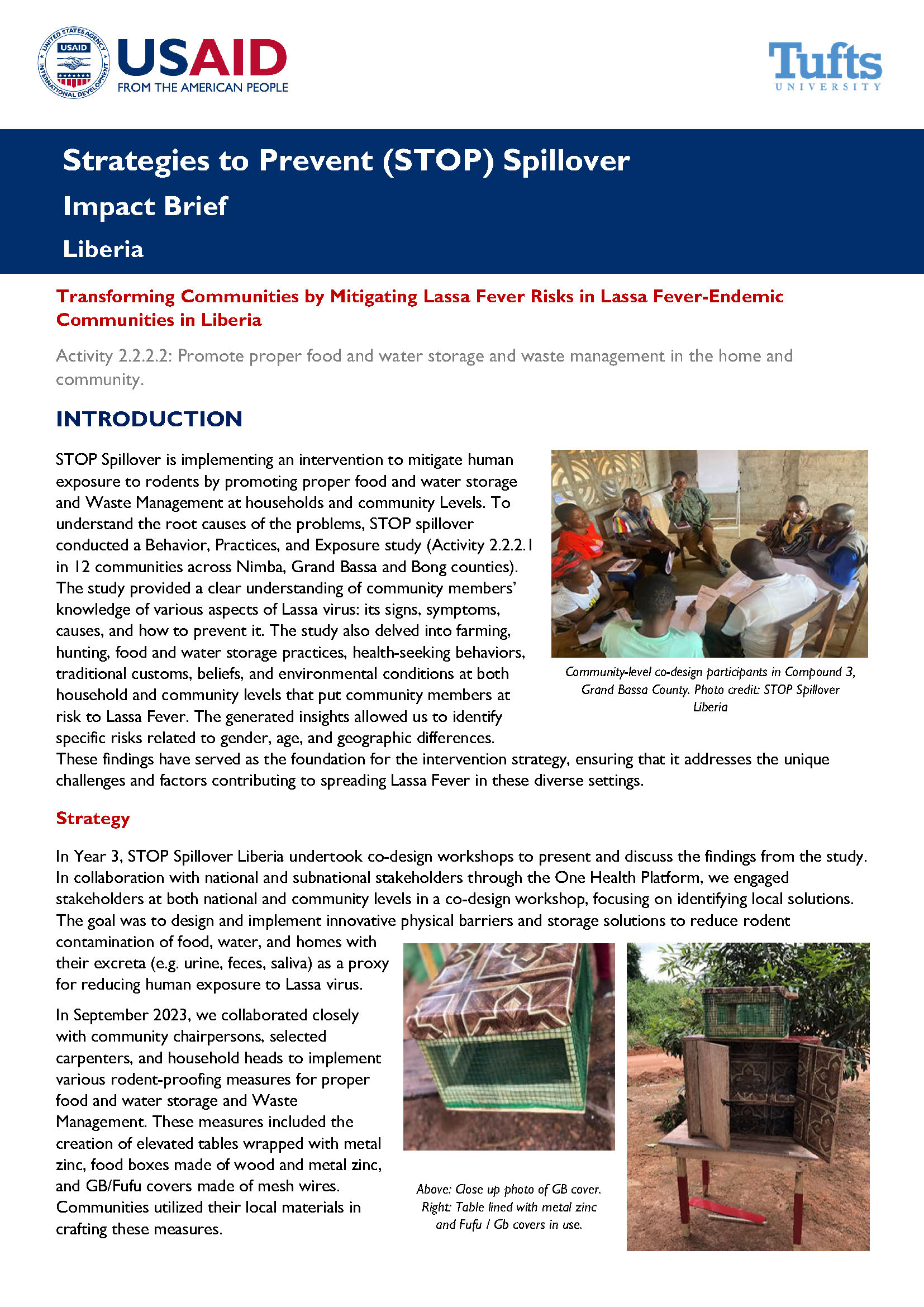
This brief describes an intervention featuring collaboration with national and local stakeholders to design and implement innovative physical barriers and storage solutions to reduce rodent contamination of food, water, and homes as a proxy for reducing human exposure to Lassa virus.
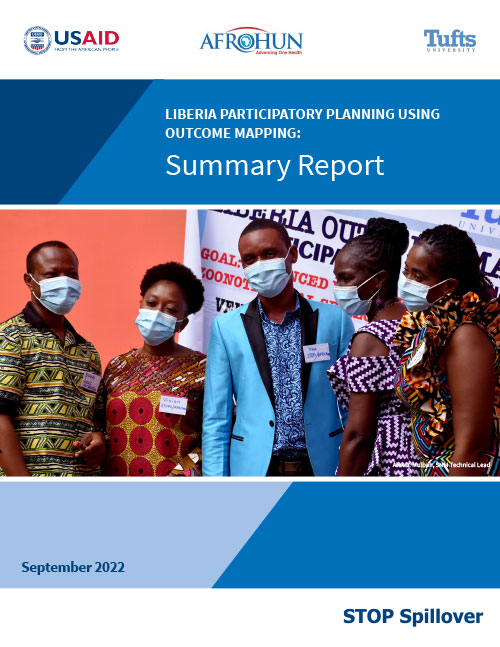
Liberia Participatory Planning Using Outcome Mapping: Summary Report
Through outcome mapping (OM), a structured participatory tool that uses a collaborative context-specific process, spillover ecosystem stakeholders (both traditional and non-traditional) are empowered to identify and reduce zoonotic spillover risks at human-animal-environment interfaces and develop an outcome-oriented project action plan. This report outlines the details of the OM workshop activities in Liberia.